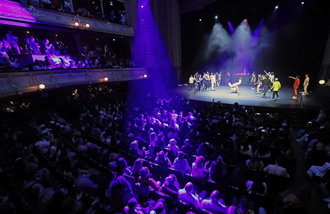Patriotic Fighter Pilots
The Korean movie Red Scarf and Top Gun have one thing in common: pilot heroes.
Fighter plane pilots depicted in movies look great in both eastern and western societies. People look at pilots with envy.
However, in reality, their lives are difficult beyond imagination. They go thorough a series of flight training and assessments and they live lives of tension. If things go wrong, they end up sacrificing their lives for their country in the prime of their lives, just like the pilots who died in a training action off the West and South Seas at night of July 13.
Difficulties-
Pilots who fly fighter jets worth billions of won and who are responsible for dangerous flying duty literally belong to the country. In case of emergency flights, they are required to live within barracks. They are allowed out for a limited time and it is difficult for them to have a long vacation.
Based on safety restrictions, they are not allowed to drink alcohol 12 hours before their scheduled flights. When they have flights the next day, they should sleep at least eight hours. They are subjected to medical check ups everyday by flight surgeons, and only with their surgeons permission can pilots have over-the-counter drugs, like cold medicines. To maintain the best condition of pilot minds and bodies, classical music always rings out everywhere within the barracks, even in toilets. This matches professional sports players managing schemes.
Without good conditions, pilots may not only experience reduced combat capacity, but also endanger their own lives. When signs of bad biorhythm show or when a pilots health is in bad shape, scheduled pilots remain off duty.
Fighter pilots have many taboos. They can call for cancellation of their scheduled flights if they had a nightmare the day before. A pilot said that the air force has had calls from families in places which pilots wives can ask for their flights to be rescheduled after dreaming nightmares. Pilots have their own jinxes such as using the same toilet stalls or avoiding a particular kind of food before a flight. With more experience, however, they manage to break their jinxes or do not have one.
Air Force pilots receive less remuneration for their weary and restricted lives. When a pilot has 10 years of experience, he or she receives 700,000 to 800,000 won in flight benefits and 80,000 won for lunch. Flight benefits have risen five percent, just once over the last eight years. The pride of the top pilots of the Air Force and their responsibility to defend the sky of the country are what keep them going.
A Series of Training Drills and Assessments-
Generally, pilots have three or four flight drills a week. Veteran pilots and instructor pilots fly five or six times a week, including night flight drills.
A flight drill requires a lot of energy because flight jets usually go up and down as rapidly as 500km per hour. In addition, during flights, pilots should operate many machines to keep in touch with the ground control center and to predict the weather, keeping vigilant all the way.
In particular, in the case of flying F-5E/Fs and F-4Es at night, which do not have alarms for low flight and were the same type of planes as the ones that crashed, even veteran pilots can not let their guard down for a second. A pilot mentioned that after day and night flights, he felt his body melt away.
A Journey to Become a Falcon-
A healthy body is the most important factor for a pilot.
An applicant to become an Air Force pilot is required to have at least 16/20 vision without correction, but the requirement will be increased to 10/20 thanks to the advance of flight technology. One pilot out of 10 wears glasses while flying. Conventional wisdom has it that a person with a scar can not be a pilot, which is not the case since a moderate level of scars like that of appendix surgery do no harm in controlling fighter jets.
To become a fighter jet pilot, an Air Force Academy graduate has to go through two years of hard training. Only 25 percent of graduates from a class (sometimes as large as 180) become fighter pilots.
After completing their flight training and joining a combat flight squadron, a pilot becomes a wingman when he finishes additional education courses. To train one wingman costs about three billion won.
It takes eight years and costs as much as 5.7 billion won a person to train a wingman until he becomes veteran instructor pilot with more than 750 flight hours through the ranks of squad leader and flight leader, said an Air Force official.
Sang-Ho Yun ysh1005@donga.com







